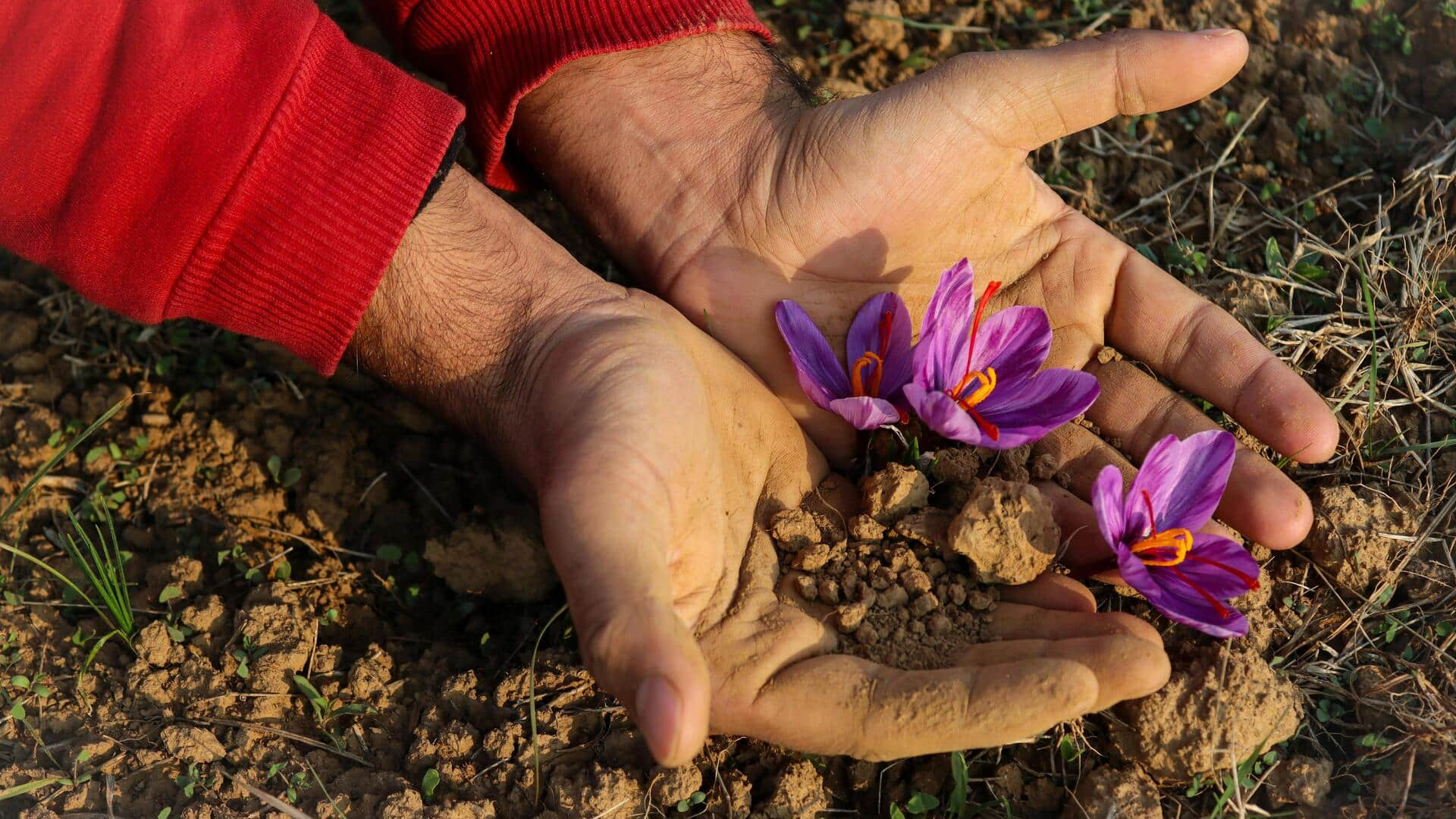
Turn your home into a saffron haven with these tips
What's the story
Growing saffron indoors can be a rewarding experience, giving you access to the world's most expensive spice. With the right conditions and care, you can cultivate this precious flower in your own home. This guide provides practical tips on how to successfully grow saffron indoors, covering essential aspects like soil, light, watering, and temperature. By following these steps, you can create an ideal environment for saffron cultivation.
Soil selection
Choosing the right soil
Selecting the right soil is crucial for growing saffron indoors. Use well-draining soil with a pH level between six and eight. A mixture of potting soil with sand or perlite can improve drainage and prevent waterlogging. Make sure the pots have drainage holes to allow excess water to escape, protecting the roots from rot.
Light requirements
Providing adequate light
Saffron crocus needs plenty of sunlight to thrive. Place your pots near a south-facing window where they can receive at least six hours of direct sunlight every day. If natural light is insufficient, you can also use grow lights to meet the plant's requirements. Position them about 12 inches above the plants and keep them on for 12 hours a day.
Watering tips
Watering techniques
Proper watering is key to successful indoor saffron gardening. Water sparingly; overwatering can lead to root rot. Let the top inch of soil dry out before watering again. During the growing season, maintain consistent moisture without saturating the soil. Reduce watering significantly during dormancy when leaves turn yellow.
Temperature control
Maintaining optimal temperature
Saffron grows best at temperatures between 60 degrees Fahrenheit and 70 degrees Fahrenheit (15 degrees Celsius and 21 degrees Celsius). Keep your indoor environment within this range by using fans or heaters if necessary. Avoid placing pots near drafts or heating vents that could cause temperature fluctuations.
Fertilization tips
Fertilizing for growth
To ensure healthy growth, it's important to fertilize your indoor saffron plants. Use a balanced fertilizer every four weeks during the growing season, but avoid fertilizing during dormancy. This will ensure your plants receive the right nutrients when they need them, promoting strong growth and vibrant blooms. Tailoring your fertilization schedule to the plants' active growing period is key to successful indoor saffron gardening.